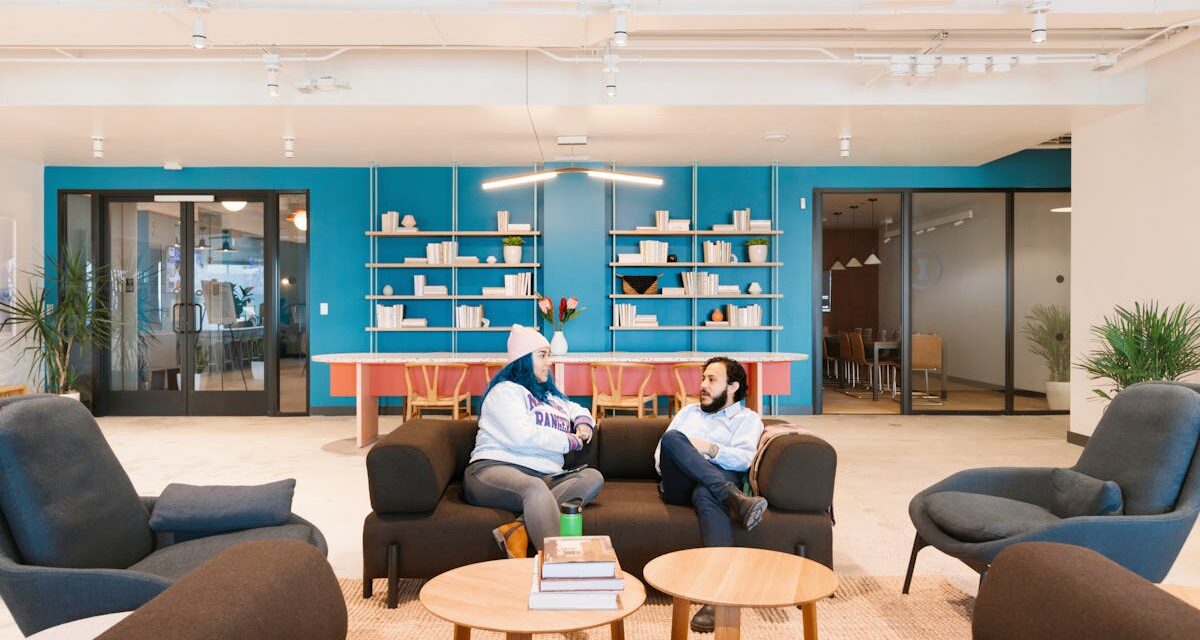The office can be a place where intergenerational mentorship happens. With the assistance of technology, we can create dynamic and adaptable workspaces that meet the needs of all workers.
You might be aware of a certain viral video making the rounds on social media. It features comedian Karen Morgan roasting Generation Z. “Gen Z doesn’t know how to write a check,” Morgan jokes. “They don’t know how to address an envelope.”
She goes on with a litany of Gen Z’s supposed analog allergies, from reading cursive to navigating with a paper map. “All I’m saying is that if Gen Z takes over the world, it’s going to be pretty easy to get it back,” she quips.
Gen Z viewers responded with their own videos decrying the supposed technophobia of their Baby Boomer and Gen X elders. One TikToker theorized that Boomers can’t “pay their bill[s] online,” or “successfully rotate and save a PDF.”
For me, these videos reflect a lot more than just a little friendly, intergenerational rivalry. The reality is, sharp distinctions exist between age groups in the workplace. And over the course of my career, I’ve often found the differences are sharpest just as a new crop of professionals is set to enter the market.
The “in-person” generation
Because Gen Z entered the workforce just as COVID-19 prompted wide-scale conversion to hybrid and remote work models, you’d think the office would be alien to them. But surveys show that about 40 percent of Gen Z workers actually prefer to work in an office to working from home. Contrast that with the roughly 60 percent of job seekers overall who say they prefer remote roles.
How can employers navigate this divide? Well, the answer isn’t to totally accommodate the needs of one generation over another. In fact, there are plenty of strategies that can ensure all workers win, no matter their age or where they prefer to work from.

Bridging the gap
Videos like Karen Morgan’s are meant in jest, but it would be naïve to ignore their underlying truth. Tension does exist between older workers and younger colleagues. It’s a tension typically rooted in differing work styles, the extent to which generations rely on or quickly adapt to technologies, and respect (or lack thereof) for traditional practices that have stood the test of time.
A workplace that effectively serves these two factions will cultivate a more satisfied culture. Coworkers of different age groups should see their differences as complements, not competitions.
And an effective way to introduce this concept is through mentorship programs. Traditional mentorship pairs older workers with younger colleagues so that the former may impart the wisdom of their experience. Younger workers absorb these best practices and learn to avoid missteps without having to suffer them firsthand.
But older workers can benefit from the mentoring dynamic too. Reverse mentorships are exactly what they sound like – younger workers guide older colleagues through issues that perennially plague them, like adapting to new technologies and navigating evolving cultural norms in the workplace.
By engineering this two-way knowledge exchange, employers create an environment wherein workers of all ages feel valued. Older employees develop skills to keep up with the pace of change, and at the same time feel esteemed for the years of experience they have. Younger employees benefit from exposure to the lessons of experience, but also feel valued for their awareness of trends and technical savvy.
Back to the office
The office will inevitably serve as the point of connection for these intergenerational mentorships. In fact, the possibility of missing out on these opportunities is one of the chief reasons Gen Z wants to return to the office.
But how can employers ensure the office Gen Z returns to is not a revival of the static office of the past? How can it be better, not just for in-office workers, but for remote workers and the people who manage both?
Building the office of the future lies in thoughtfully leveraging technology and data. By analyzing data on how workers use office space, businesses can create dynamic environments that respond efficiently to needs in real-time.

For example, employers can install smart office monitoring technology to understand how staff members are utilizing the workspace. At the same time, this information can help businesses identify potential reductions in overhead.
For instance, businesses can install Internet of Things (IoT) sensors throughout an office so that businesses can collect data on occupancy and utilization patterns. Armed with this data, office managers can make informed decisions about allocating workspace and provisioning resources.
Businesses can also use indoor environmental quality (IEQ) sensors to continuously check temperature, humidity, air quality, and lighting. Having this real-time data on hand allows organizations to gain insights into office-worker comfort, and empowers them to take proactive action to improve the workplace environment.
These might include adjusting HVAC settings, optimizing lighting systems, implementing air quality improvements, or reorganizing the office to maximize natural light exposure.
Getting the most bang for your buck when it comes to space usage also resolves a major point of contention between employers and those employees, typically older than Gen Z, who prefer remote work arrangements. The latter can sometimes be forced into suboptimal hybrid or fully in-person arrangements because organizations want to make the most of the square footage they’re renting.
However, by paying attention to utilization data, these organizations can dynamically adjust their office environment in response to patterns. For example, they might choose to power down the lights in low-traffic areas.
In this way, businesses can retain scaled-down physical office spaces that meet the needs of Gen Z employees who wish to get their work done on-site. They can utilize that space intelligently, responding to fluctuating, day-to-day occupancy needs.

The intergenerational smart office
Gen Z workers may prefer the amenities of an in-office work experience, but, like their predecessors, they can still be alienated by some of the design mistakes of the past. Sending workers back to pre-COVID cubicle farms is a lose-lose situation.
Employees today need to feel there are concrete reasons that require their physical presence. Businesses should focus on building spaces that foster face-to-face collaboration. Offices should therefore be designed around a mix of open and enclosed collaborative spaces.
These areas can be outfitted with whiteboards or large notepads to encourage spontaneous discussions and brainstorming. These spaces should also feature the latest communications technology, for example, camera- and Wi-Fi-enabled displays, which allow remote workers to participate in collaborative discussions.
There’s no reason why office spaces need to be static. Just as businesses can dynamically adjust utilities in response to usage and environmental data, they should also create workplaces that are adaptable to meet the day’s needs. Supplying movable furniture and partitions is a great way to allow individuals and teams to customize the space to meet their ever changing needs.
Final thoughts
I don’t share the view that Gen Z is somehow deficient because they prefer sending DMs over handwritten letters. And I don’t think that older generations are helplessly befuddled by PDFs.
What I do know is that beneath a layer of contention between generations is a rich set of differences that complement and accentuate each other. The key is to design spaces that allow for easy knowledge sharing and collaboration between generations, while also leveraging technology to make it all financially worthwhile.









